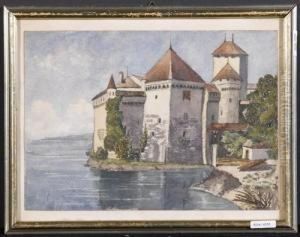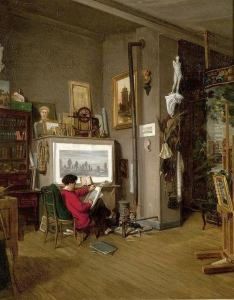Eugene Tanguy Paintings
Eugène Henri Paul Gauguin was a leading Post-Impressionist painter whose innovative use of color and synthetist style were distinctly different from Impressionism. Born on June 7, 1841, in Paris, France, Gauguin's early life was marked by a move to Peru due to political turmoil, an experience that later influenced the exotic themes in his art. Initially, Gauguin pursued a career in the merchant marine and the French navy, and it wasn't until his return to Paris in the 1870s that he began painting in his spare time, eventually deciding to pursue art full-time despite little formal training.
His early work was associated with the Impressionists, and he exhibited with them in 1876. However, Gauguin grew dissatisfied with the movement's emphasis on the natural depiction of light and color. Seeking to escape the conventions of European painting, Gauguin left for Panama and Martinique in 1887. It was his subsequent move to Tahiti in 1891, seeking an idyllic and unspoiled landscape, that marked the beginning of the most influential period of his career. Gauguin's Tahitian works, characterized by bold colors, simplified forms, and a departure from perspective and traditional European subject matter, sought to portray an untainted paradise, albeit one deeply entwined with the artist's fantasies.
Gauguin's style evolved into what he called Synthetism, a blend of the real and the symbolic, focusing on the emotional expression through color, line, and form. Notable works from his Tahitian period include 'Fatata te Miti (By the Sea)', 'Aha Oe Feii? (What, Are You Jealous?)', and 'Where Do We Come From? What Are We? Where Are We Going?'. His influence extended beyond painting, affecting the Nabis group and later movements like Symbolism.
Struggling with financial difficulties, health problems, and legal troubles, Gauguin spent his last years in the Marquesas Islands, where he continued to paint but also became embroiled in local colonial politics, advocating for native rights. Gauguin died on May 8, 1903, in Atuona, Hiva Oa, Marquesas Islands, French Polynesia. His posthumous reception was complex, initially criticized, his work later gained recognition for its profound impact on modern art, influencing artists such as Pablo Picasso and Henri Matisse. Gauguin's legacy is controversial; his life and relationships, particularly with young Tahitian girls, have been scrutinized, sparking debates about the intersections of colonialism, exploitation, and art.

